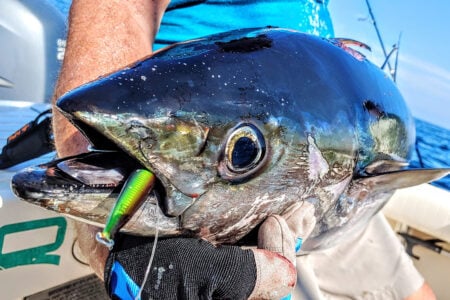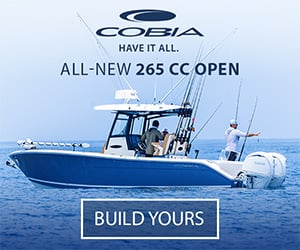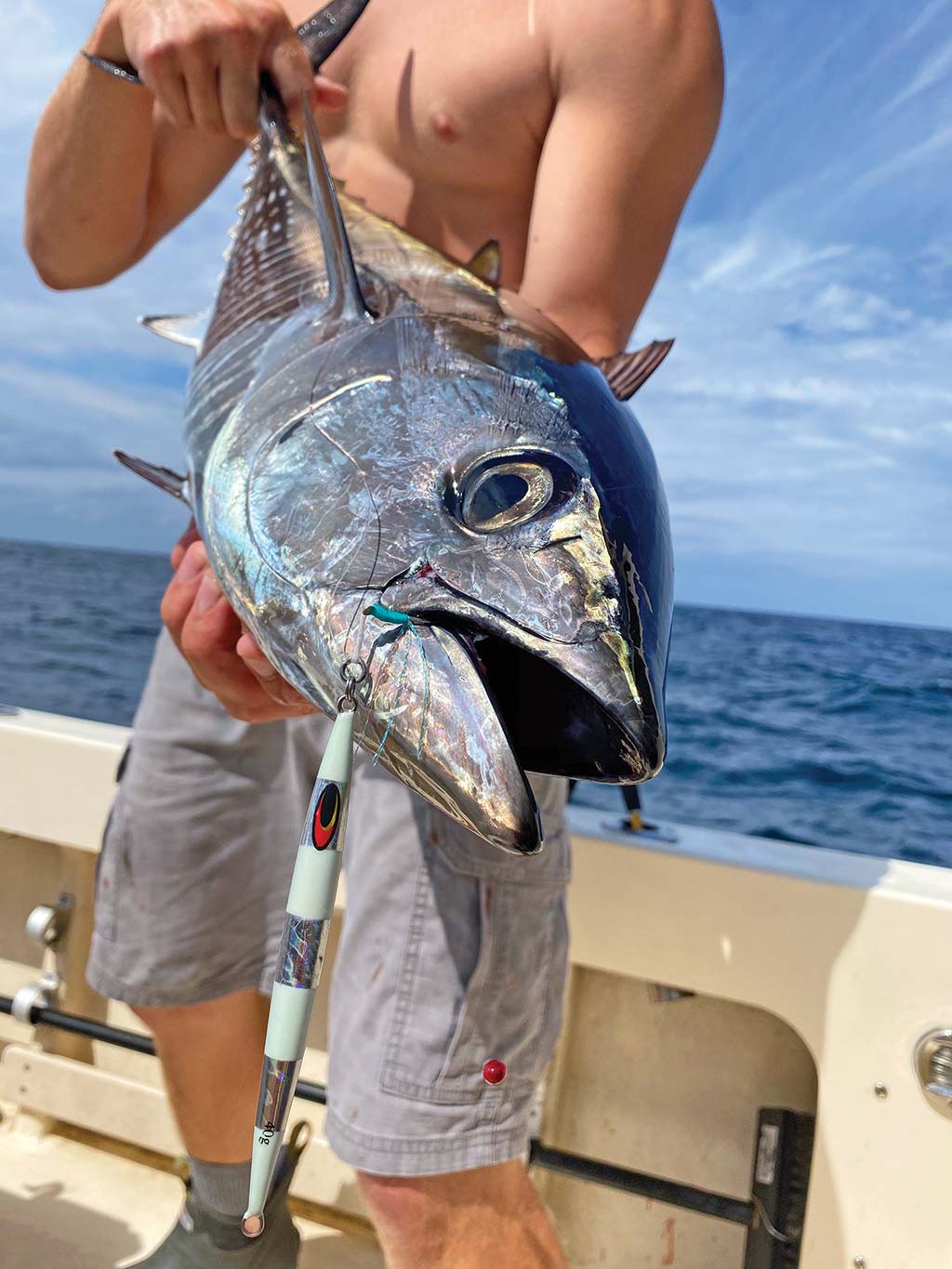
Once you master the motion and technique of speed jigging, you need to understand the reason it works.
Day in and day out I can count on one question that I will constantly be asked from customers as they come through our doors at The Reel Seat in Brielle, NJ – can small spinning or conventional rods actually handle large tuna, and to this question the answer is most definitely yes!
For some, the idea of rods in the 5- to 6-foot range to handle large tuna along the Northeast grounds seems far-fetched, but with the fishing industry becoming increasingly progressive this is now a reality for many anglers, including myself.
The summer of 2020 was one of the most memorable tuna seasons many anglers have ever had. Last season, the tuna showed up in June and were in the 75-mile range from my home port of Manasquan Inlet at the Jersey Shore. These bluefin were migratory fish, which were making their way up the coast to the shores of New England along the 30-Fathom line.
The size class of these fish were “overs” or a fish greater than 47 inches but less than 73 inches in length. From minute one if you didn’t have a jig rod that could properly work an 80- to 100-gram jig through the water column you were already behind the eight ball.
This bite continued into July where some yellowfin tuna decided to come into the same area with the bluefin, which now were “unders” in the range of 27 inches but less than 47 inches in length. Once again light tackle jigging was the way to go. Then as soon as August hit, the yellowfin bite was on, with five-man limits a daily occurrence and all coming on jigs in the 120- to 150-gram range being speed jigged through the water column. The summer of 2020, for many folks, was quite a learning curve with some anglers lost or “left behind” due to the new technology and style of jigging. If that was you, don’t worry, I’ve got you covered with all you need to know to be prepared for next tuna season.
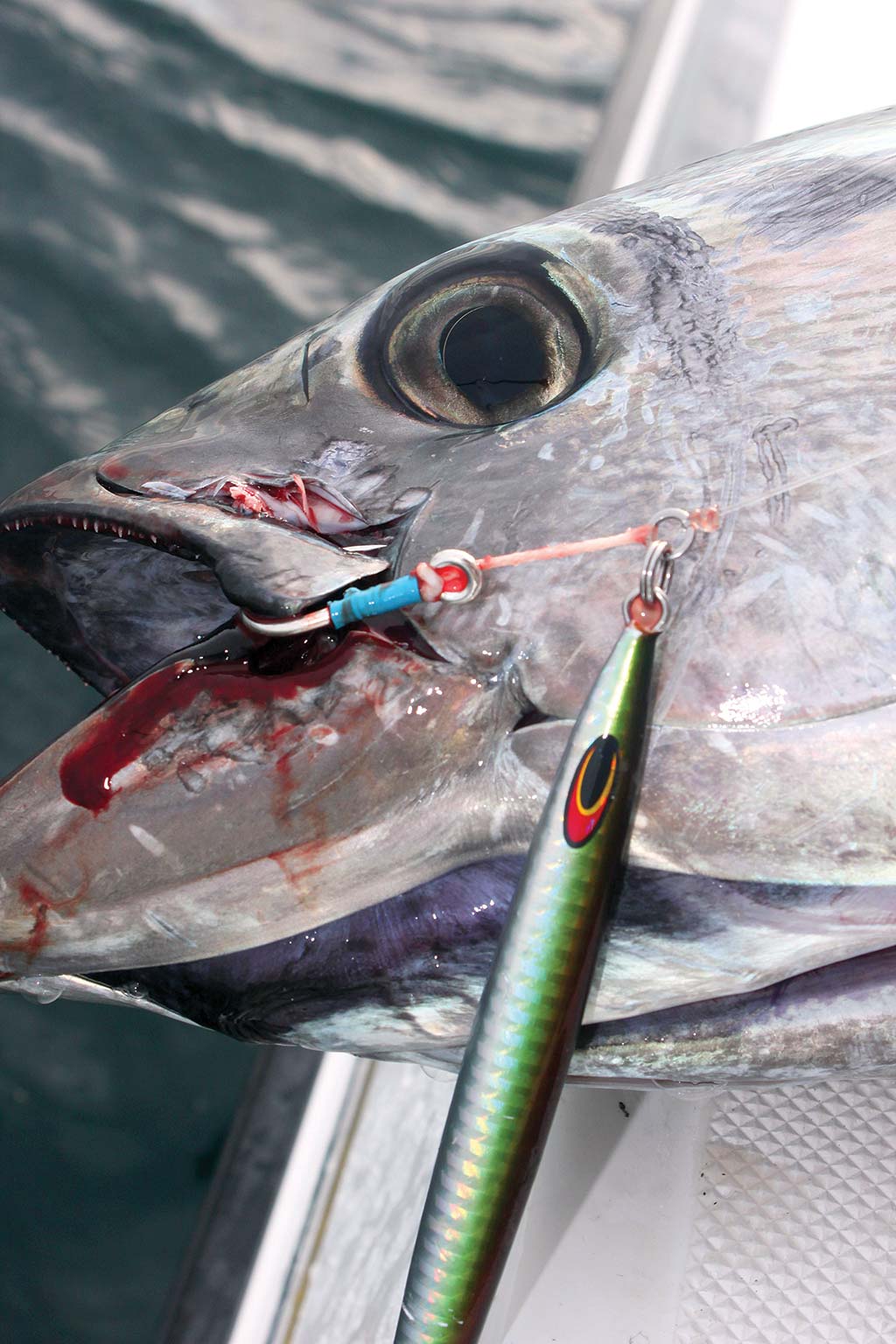
Understanding Speed Jigging
Many anglers do not realize how in-depth, or even what speed jigging is. Speed jigging is a style of jigging which involves the angler dropping their jig to the bottom and at a fast pace and retrieving the jig while working it through the water column. Every angler has their own specific motion they use as they retrieve the jig, but personally, I allow my jig to reach the bottom and start retrieving at a fast pace allowing one crank of the handle to one lift of the rod and incorporating pauses every so often. This motion will often draw a strike in the first few jigs as fish view the jig as a sand eel fleeing from the bottom.
Once you master the motion of speed jigging and exactly how to do it, you need to understand the reason it works. The tackle you use while speed jigging is very important and actually critical to your success. The rods must have a tip soft enough so that when you go through your motions it loads up your tip allowing the jig to propel through the water and work properly. Each speed jigging rod has a gram weight rating which is imperative to match with the weight of your jig. This allows your rod tip to work the jig properly. If the gram weight and jig weight don’t align, you are setting yourself up for less success on the water.
The jigs you select while speed jigging is also another key factor. I find that slender jigs in the 60- to 200-gram range tend to work best locally while speed jigging for any of the pelagics found in our waters. The most popular and readily available jig that falls in this range is the Streaker Jig by Nomad Design, which is a proven killer. These jigs come in multiple sizes such as 60, 80, 120 and 200 grams allowing you to work them with most of the speed jigging rods available on the market. They also come in a variety of color patterns, the most popular being Sand Eel, Sardine and Pink Sardine.
When speed jigging for tuna the size of your jig depends on the time of the season and it is critical to “match the hatch.” In the early part of the season I prefer smaller, light weight, slender jigs because the sand eels are smaller in size – roughly 4 to 6 inches. As the season moves on, I prefer slightly heavier jigs, but still slender because the sand eels are much longer in length now – anywhere from 6 to 9 inches.
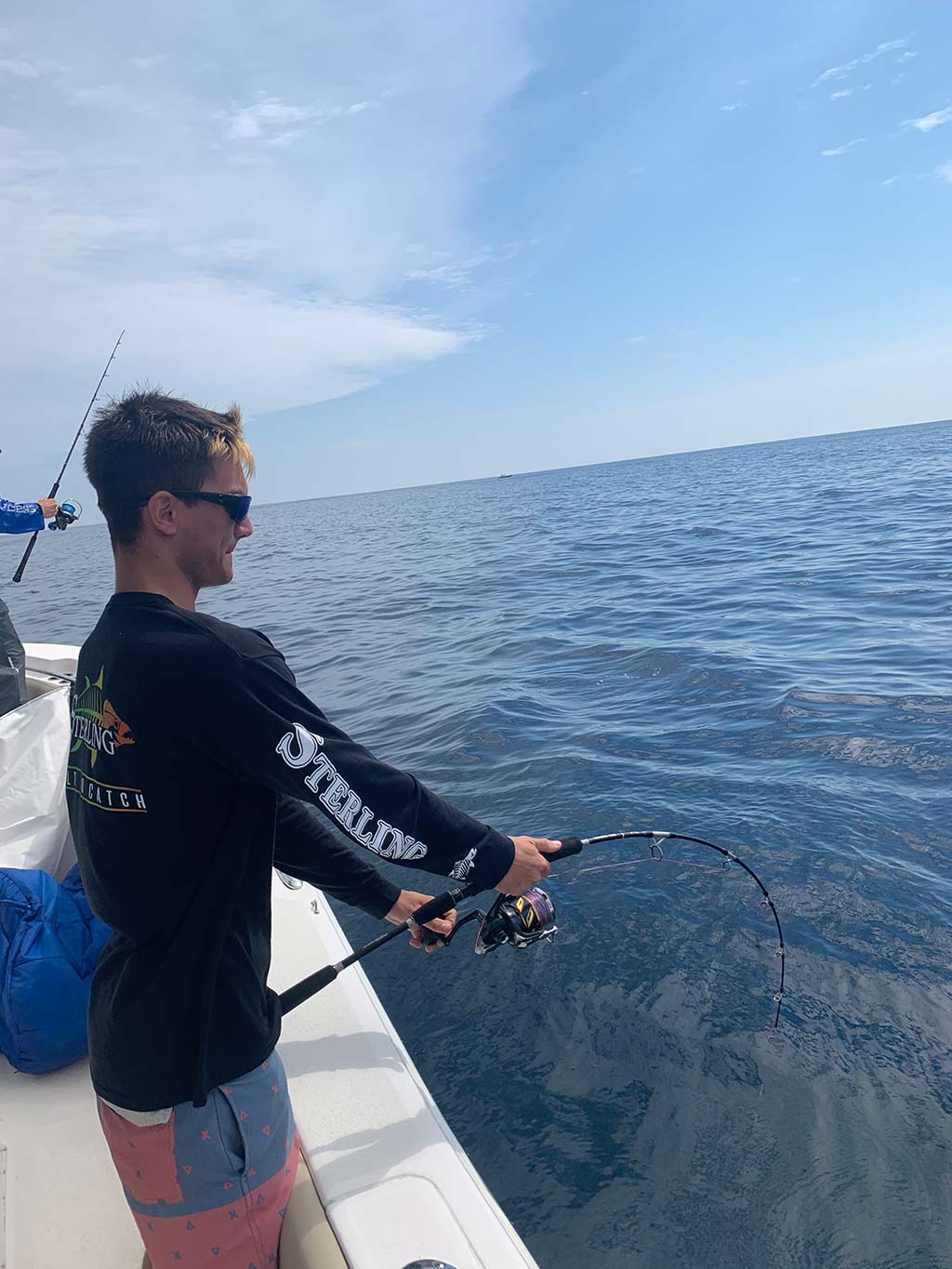
Gearing Up For Offshore
Reel selection along with the rest of your tackle is another important factor. You want something sturdy that can stand up to the test that any pelagic is going to put to your tackle. A reel with a strong drag (25 to 40 pounds) and plenty of line capacity (at least 300 yard) is a must-have for speed jigging. The most popular and ideal size reel sold for speed jigging is a 10,000-size reel with a gear ratio of 5:8:1 that allows you to retrieve the line at the perfect pace as you work the jig through the water column.
Line may seem like less of factor when it comes down to the grand scheme of things, but it is something that often throws people for a loop when talking jigging. The term P.E. refers to the size line used for a specific jigging rod. The term P.E is simply short for Polyethylene, which is what most braids used for jigging are made from. P.E simply measures the diameter of the braid.
Many companies such as Daiwa with their J-braid make it quite simple to understand. They often make the line weight in pounds 10 times the P.E. rating (P.E. 5 x 10 = 50-pound braid). This braid is ultra-light weight and smooth which allows you to jig deeper waters without scoping out. The finer diameter allows you to stay vertical which is imperative for speed jigging.
When it comes to jigging, anglers tend to stick to what is familiar to them and whether you categorize yourself as a traditional conventional rod fisherman or a spinning rod fisherman, I promise whatever side of the aisle you are on, there is room for both in your arsenal. Avid jig fisherman have multiple jigging rods, but whether you are getting ready to buy your first or your tenth jigging rod you should know the pros and cons of both spinning and conventional speed jigging rods.
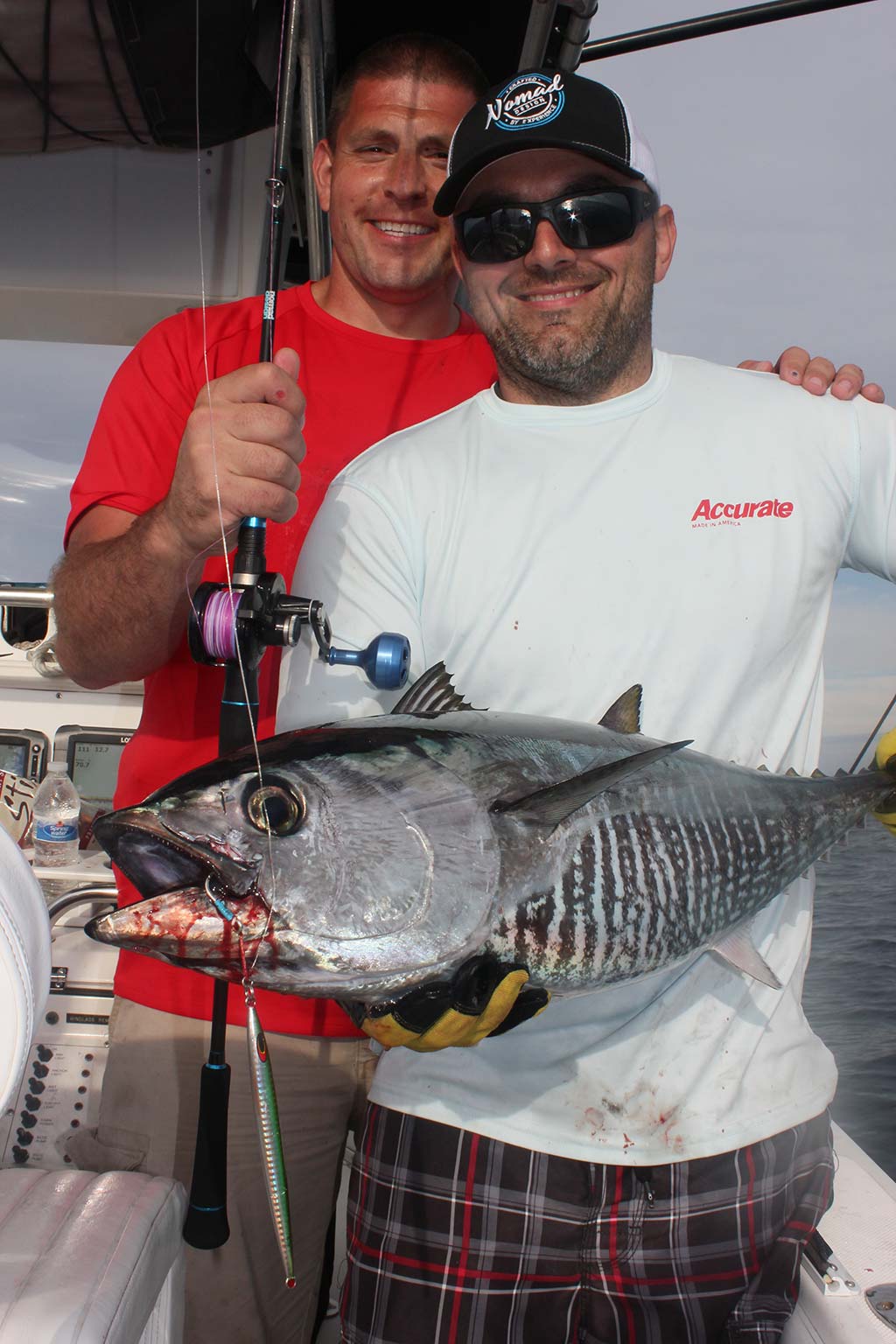
Spinning
Pros: If you are just getting into speed jigging the spinning rod is where I recommend you start. The spinning rod brings a familiar feeling to anglers who are unfamiliar to speed jigging. It is much easier to get the motion of speed jigging down this way, plus it is more comfortable in my opinion to jig all day long due to the parabolic nature of the rod, which helps take strain off the angler.
Cons: The only downside to a spinning rod over a conventional rod is the amount of torque you have. Spinning rods and reels don’t have as much power behind them as conventional outfits but are certainly capable of handling a majority of the tasks required of speed jigging.
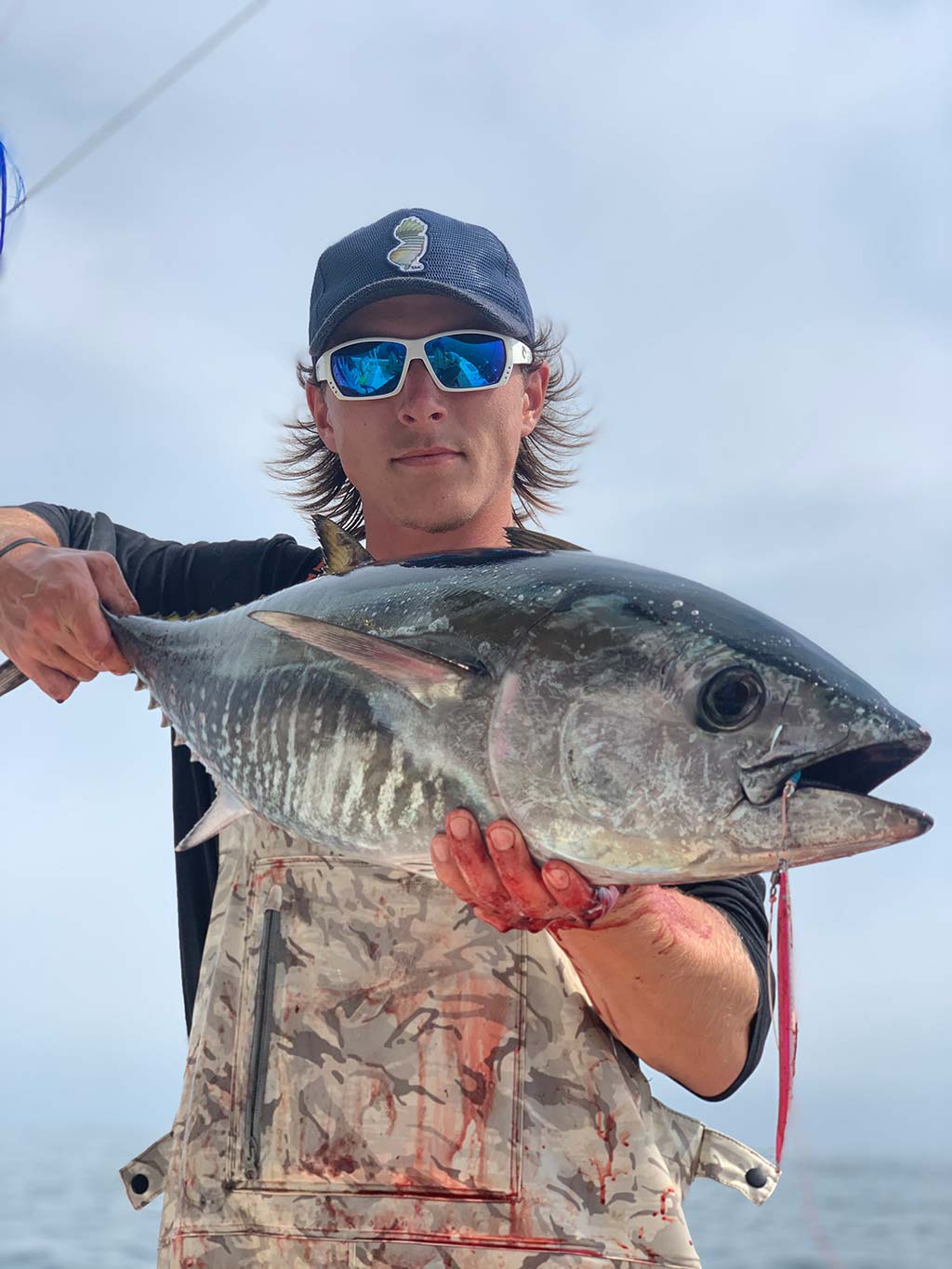
Conventional
Pros: The conventional rod is most definitely a powerhouse when it comes to speed jigging and it has many advantages. Conventional speed jigging rods allow you to have more control over larger fish, due to the reels providing more torque. Much like the nature of the spinning rod, these light action conventional rods allow for minimal fatigue of the angler
Cons: The only downside to these rods is that some people find it difficult to master the rhythm of jigging with conventional gear. These rods may not be as user friendly to the beginner, but most certainly belong in every serious anglers’ arsenal.
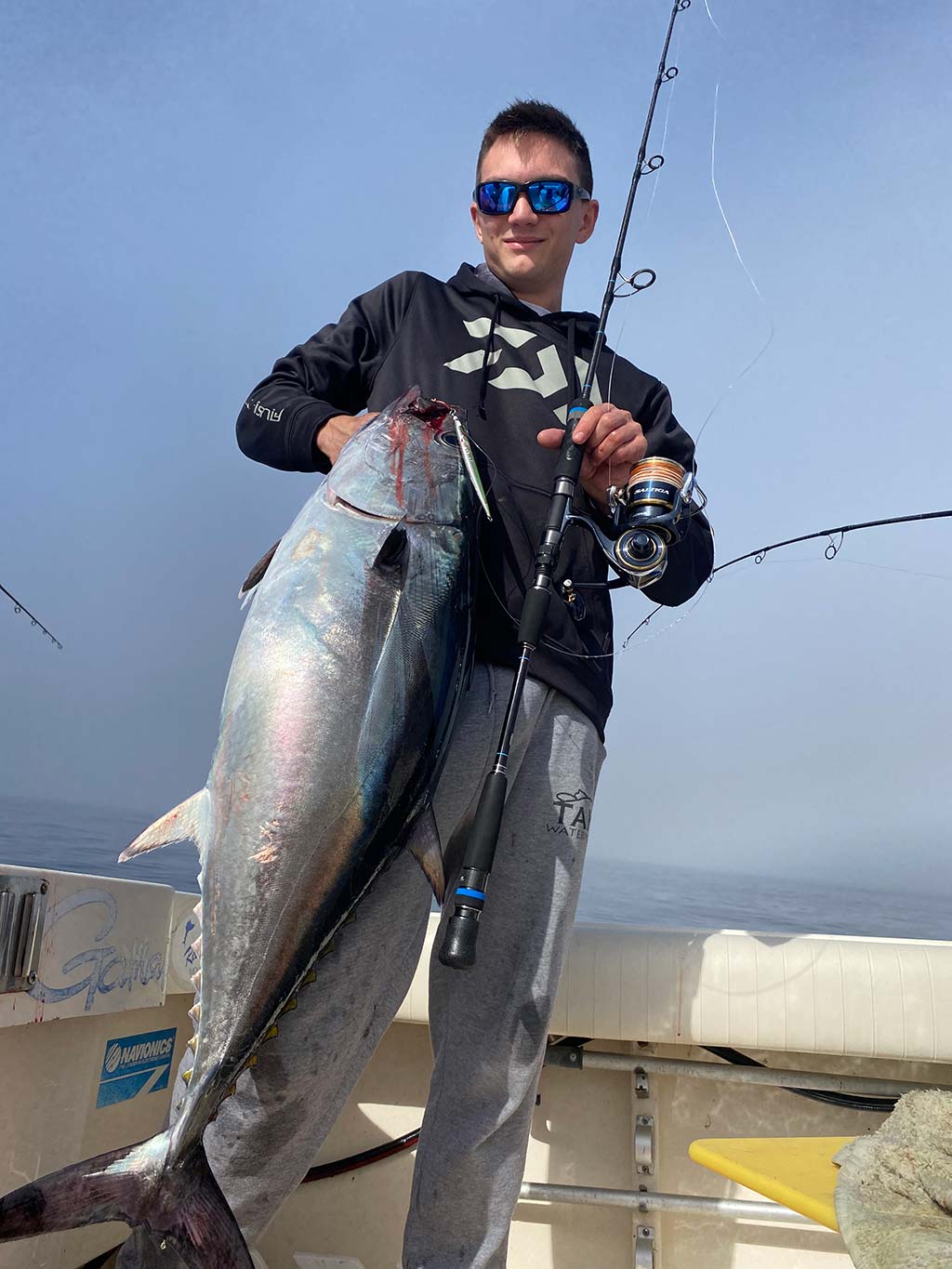 |
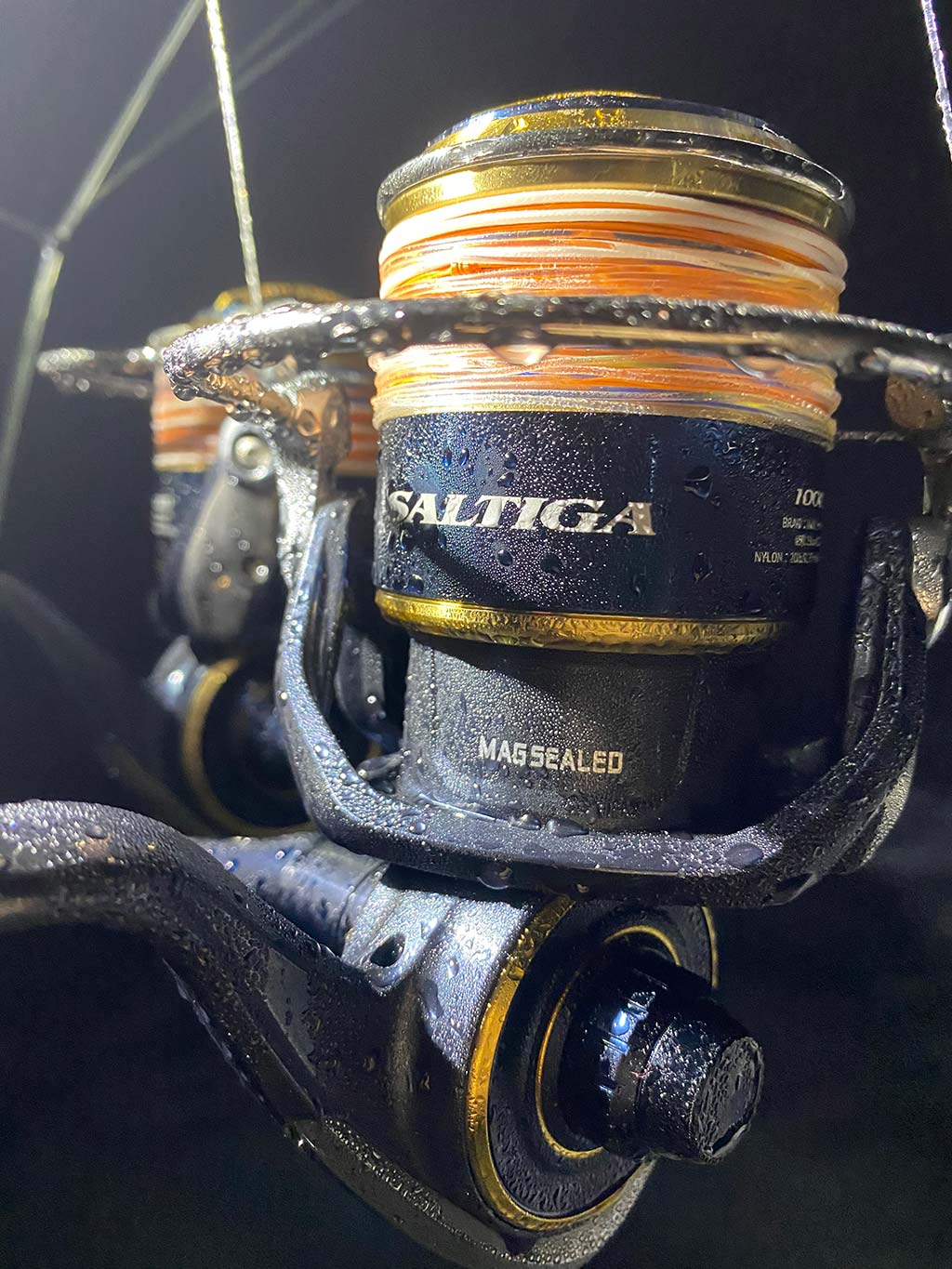 |
| The author’s preferred set-up when going big on the jig is a Centaur Chiron 5-foot SH rated for 300-500 grams paired with a Daiwa Saltiga 20,000-H filled with 80-pound metered braid and a 100-pound wind on leader. | |
Armed with basic information about speed jigging, while understanding the pros and cons of spinning and conventional speed jigging rods, it is time to pick an outfit. When helping a customer pick out a speed jigging set-up on a daily basis, I first ask what size class of fish they plan on targeting. This typically helps me find the correct category of speed jigging rods to place them into, and is a question you should ask yourself before selecting an outfit. With this in mind, note that every jigging rod is made differently with length of the rod affecting the rating and abilities, so it is best to get the rod into your hands before purchase.
Most anglers plan on targeting tuna ranging from 40 to 100 pounds, or roughly 40 to 55 inches in length. For these fish, I recommend you get a rod that can work your most commonly used 120-gram jig, which depending on the manufacturer, has a gram weight rating ranging from 180 to 300 grams. My preferred weapon of choice is a Centaur Chiron 5-foot, 2-inch SL with a gram weight rating of 120 to 260, paired with a Daiwa Saltiga 10,000-H filled with 65-pound metered braid and an 80-pound wind on leader.
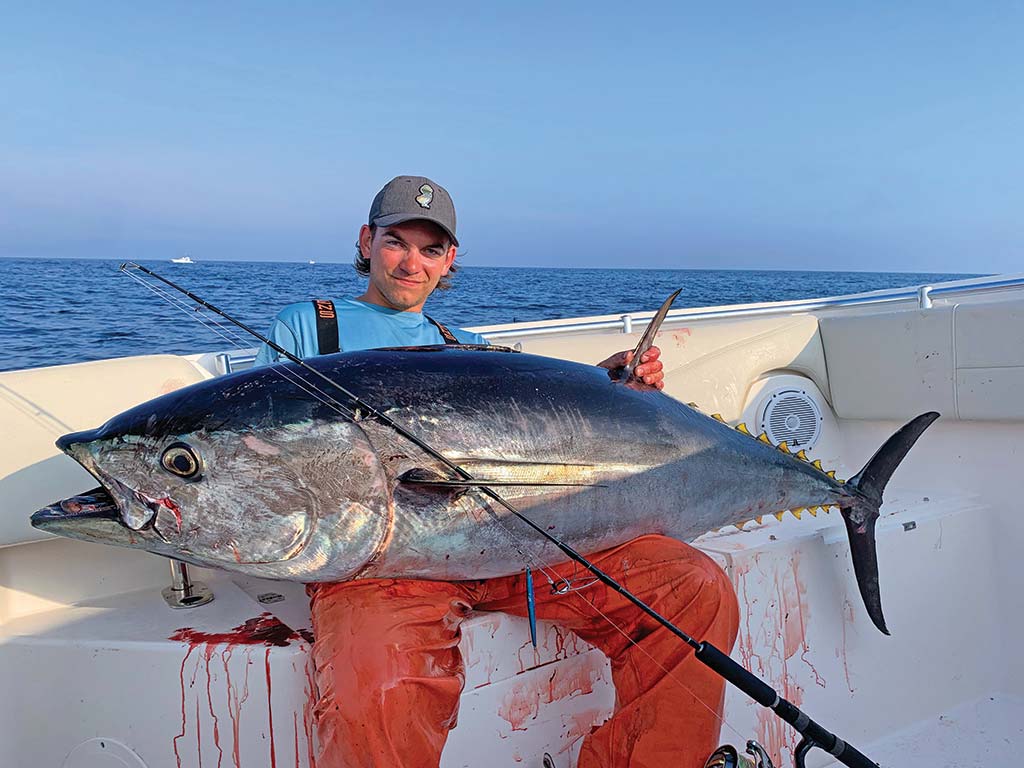
For the hardcore angler looking to get in on a jig fish in the 60-inch and over range, there is a completely different set up for you. You should be looking for a rod that can work jigs in the 120- to 200-gram range with enough backbone to handle a fish of this caliber. Ideally, you are looking for a rod with a gram rating of 300 to 500 grams but with a tip soft enough to work the jigs properly. My preferred set up is a Centaur Chiron 5-foot SH with a rating of 300 to 500 grams, paired with a Daiwa Saltiga 20,000-H filled with 80-pound metered braid and a 100-pound wind on leader.
Speed jigging tuna becomes an addiction for many anglers and is one of the ultimate offshore fishing experiences. When the jig bite turns on this summer, you want to be ready. Stock up early and get prepared because when you hook your first tuna on the jig there is no turning back.


